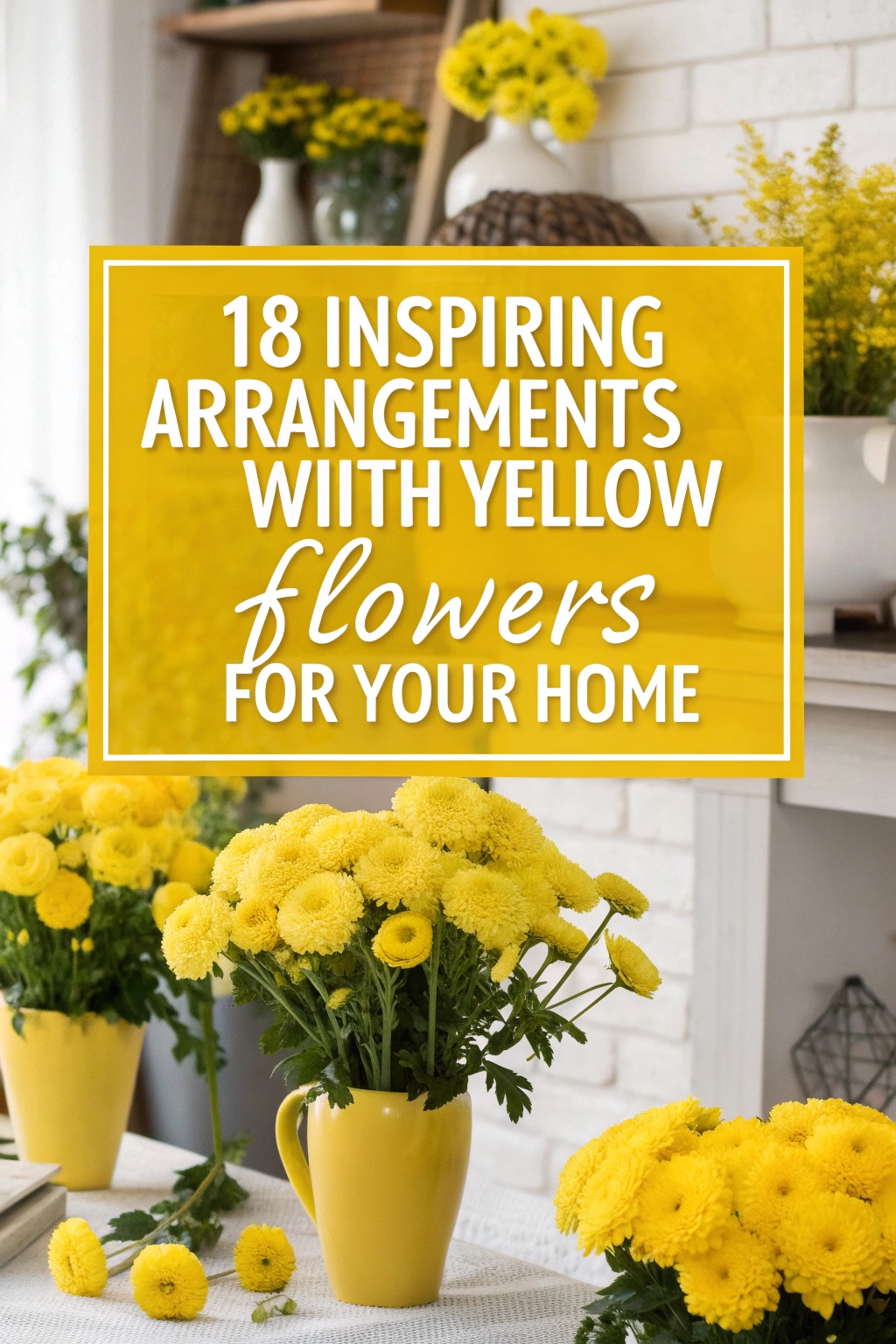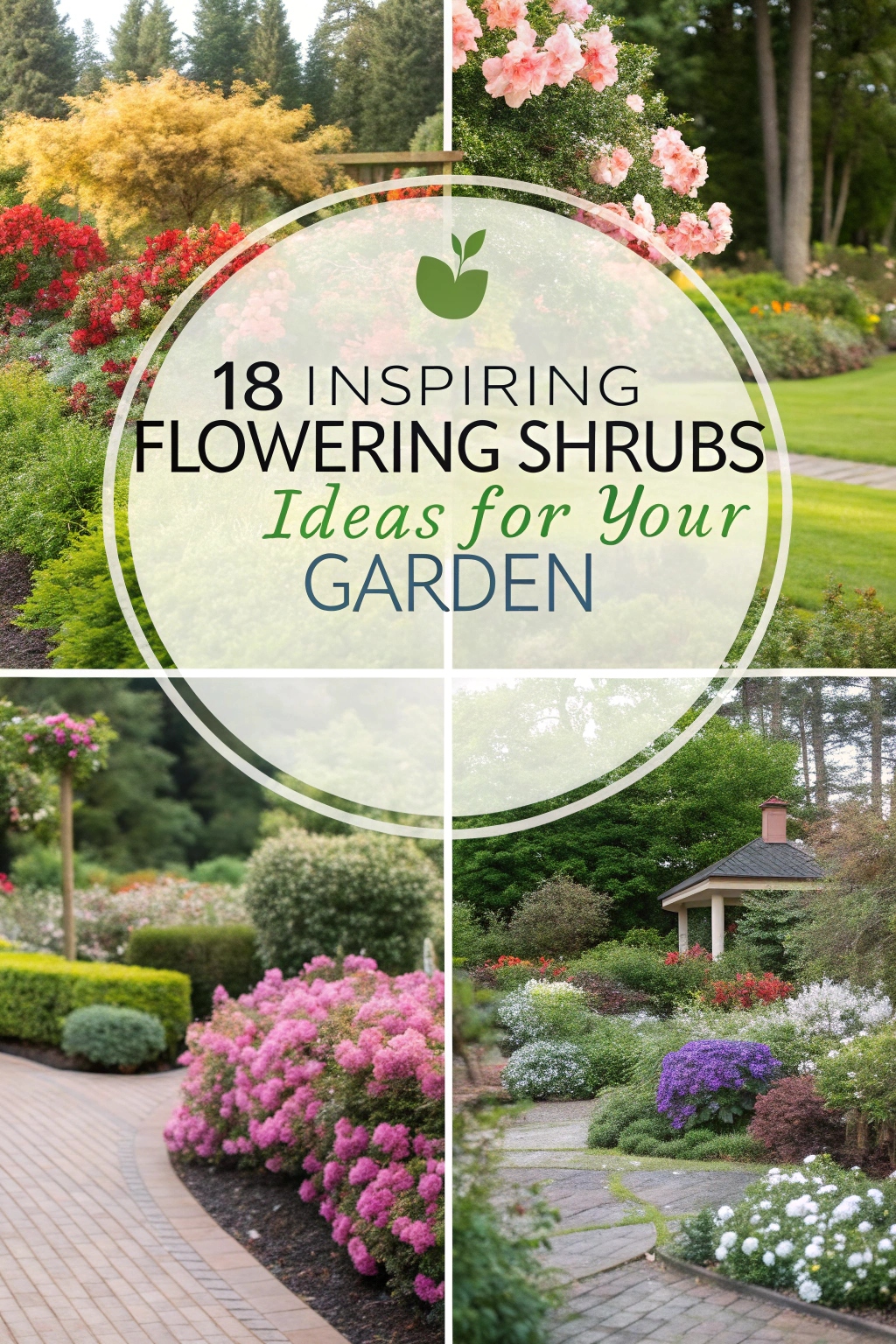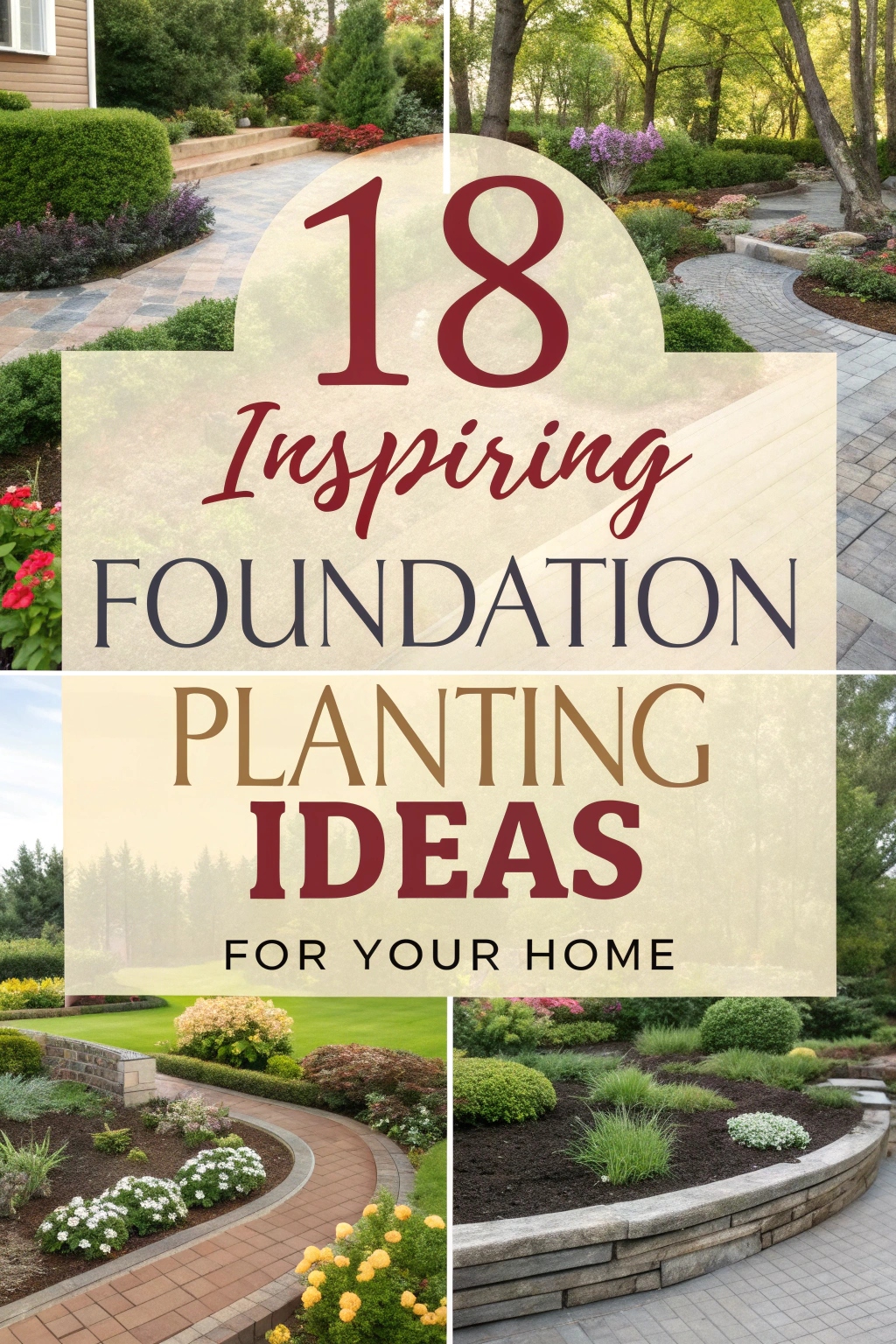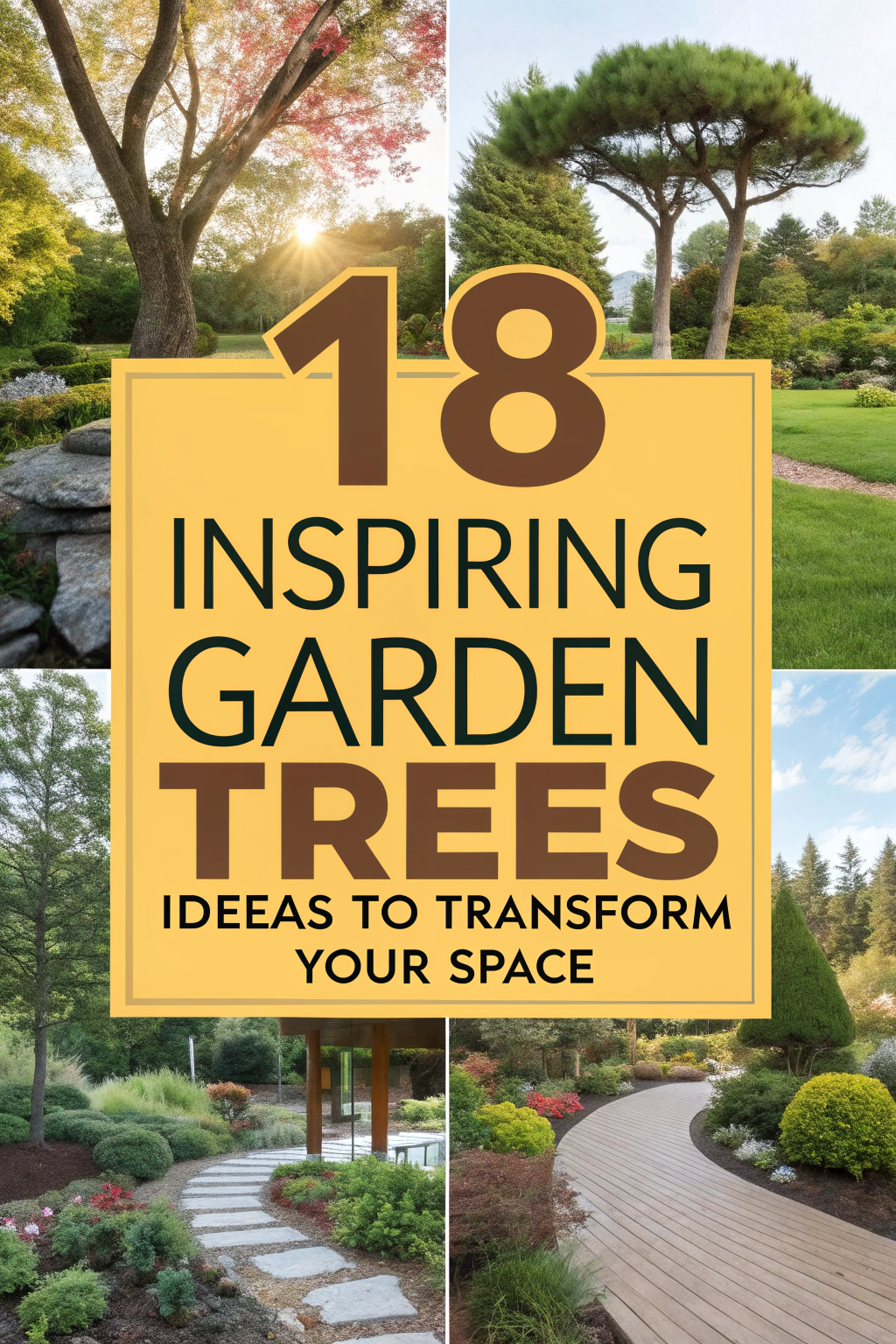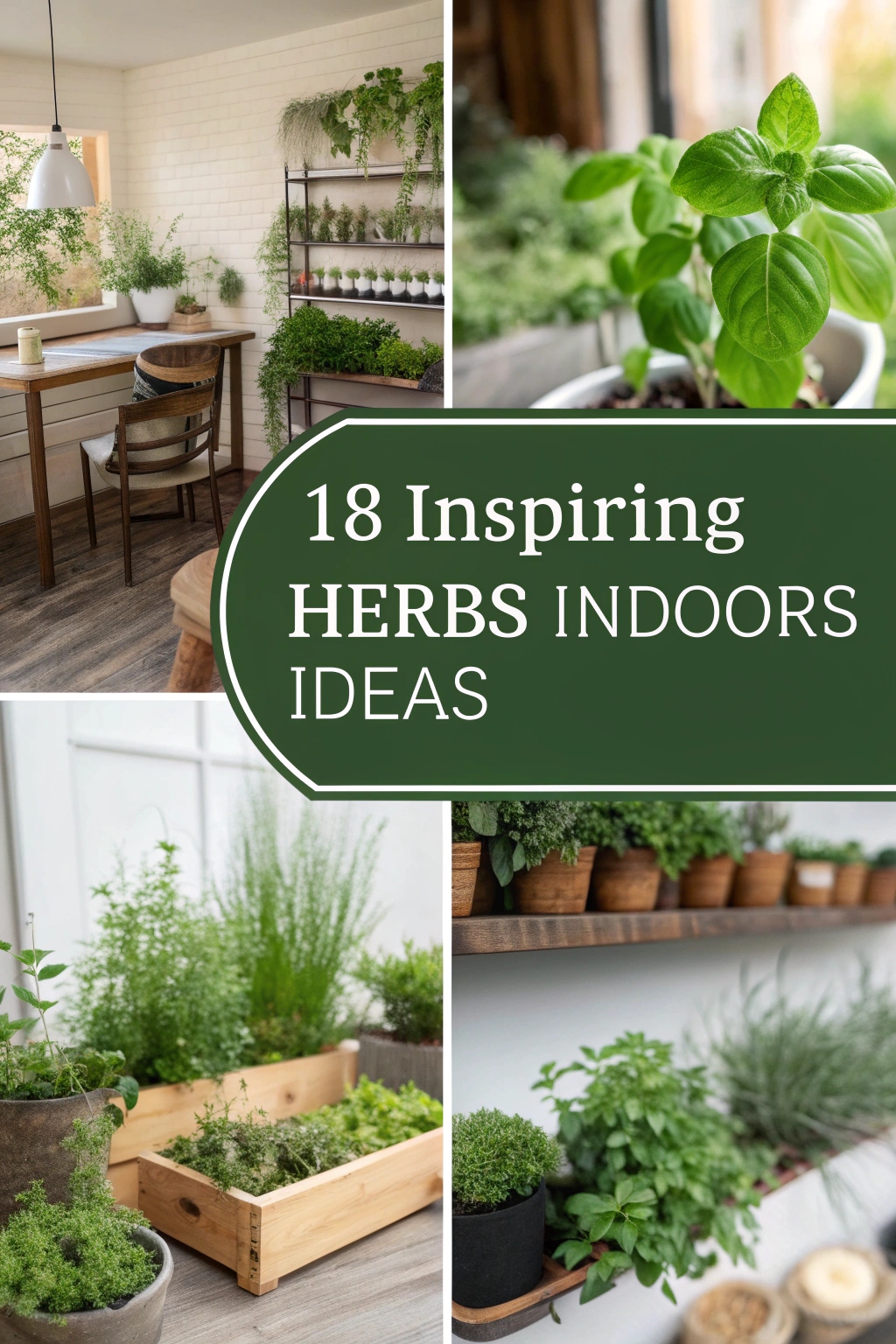17 Inspiring Ideas for Planting Around Trees in Your Garden
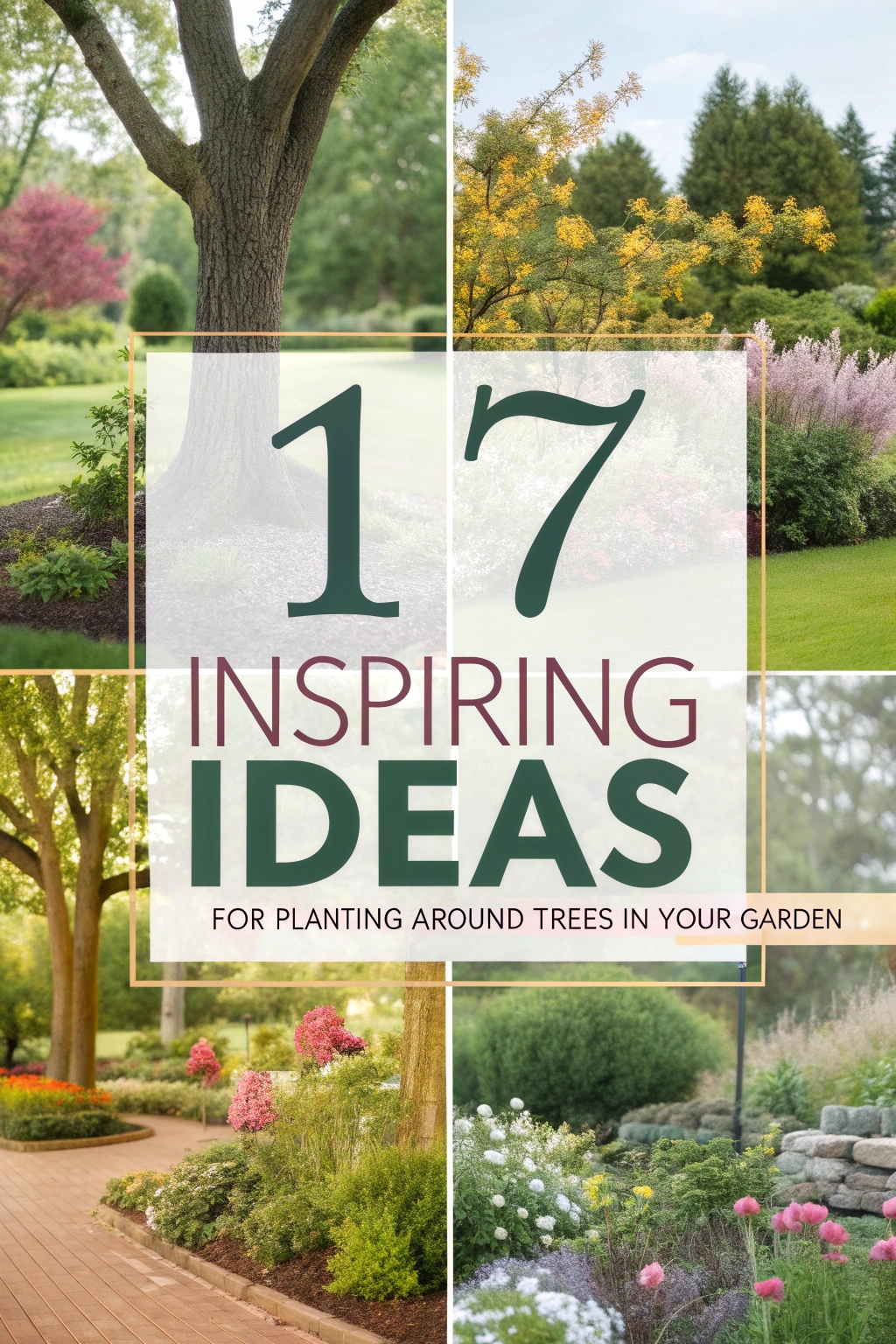
Transforming the space around your trees can breathe new life into your garden. By thoughtfully selecting plants, you can create layers of texture and color that enhance both beauty and functionality. Imagine attracting pollinators while establishing cozy spots for relaxation. There’s much more to explore, from vibrant ground covers to fragrant sensory plants that can elevate your outdoor experience. What about those unique combinations that can truly make your garden thrive?
Embrace Ground Covers for Texture
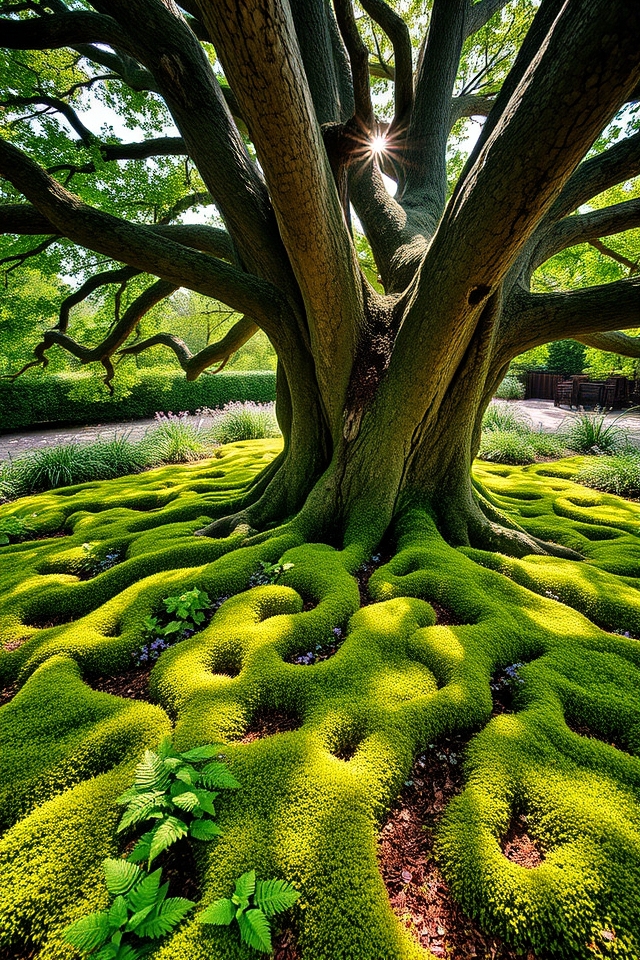
Embracing ground covers around trees enhances both aesthetics and health of your garden. These low-growing plants not only add rich texture and vibrant colors to the landscape, but they also help suppress weeds, retain moisture, and stabilize soil. Varieties like creepers, mosses, or flowering ground covers can create a lush carpet, highlighting the beauty of the trees while promoting biodiversity and providing habitats for beneficial wildlife. Choose ground covers suited to your climate and tree’s needs for a flourishing under-tree environment.
Incorporate Native Wildflowers
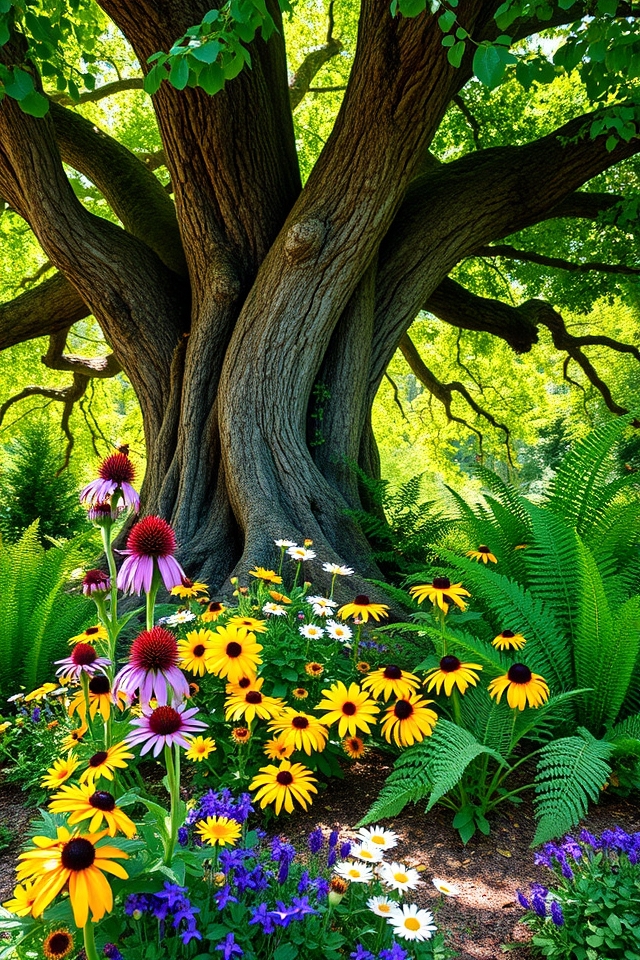
Incorporating native wildflowers around trees not only enhances the beauty of your landscape but also supports local ecosystems. These flowers are adapted to thrive in specific soil and climate conditions, requiring less maintenance and fewer resources. By attracting pollinators like bees and butterflies, they promote biodiversity and help sustain wildlife. Additionally, native wildflowers can prevent soil erosion and improve soil health, creating a thriving environment for both trees and other plants.
Create a Woodland Oasis
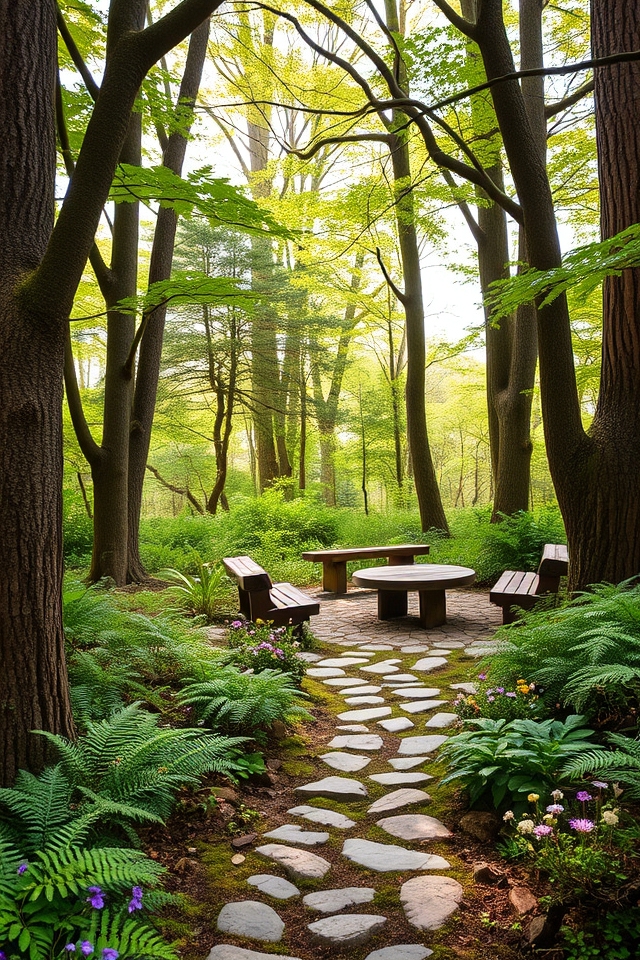
Creating a woodland oasis involves transforming a grassy or bare area into a lush, earthy retreat filled with native trees, shrubs, and underplantings. Start by selecting a diverse range of trees that provide shade, structure, and habitat. Complement them with ferns, wildflowers, and ground covers to create layers of interest and color. Add seating areas and walking paths made from natural materials to enhance exploration and enjoyment of your serene outdoor haven. This tranquil space will invite both wildlife and relaxation.
Utilize Perennials for Year-Round Interest

Utilizing perennials around trees enhances the garden’s visual appeal while guaranteeing year-round interest. These hardy plants thrive in varying conditions, providing vibrant blooms in spring and summer, and stunning foliage in fall and winter. When selecting perennials, consider the tree’s light and moisture requirements to guarantee compatibility. Varieties like hostas, daylilies, and ferns can flourish in the understory, creating a lush, layered effect that compliments the tree’s structure and enriches the overall landscape.
Add Color With Annuals
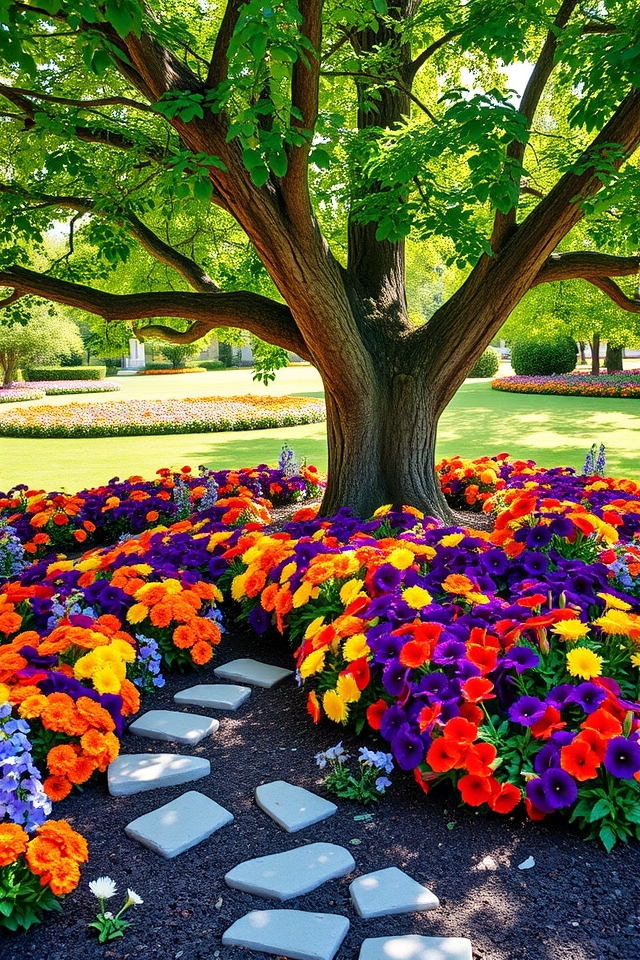
Adding annuals around trees can instantly brighten your garden and create a vibrant, welcoming atmosphere. These short-lived plants offer a spectrum of colors and can be chosen to complement the foliage and bark of your trees. Consider planting bold petunias, cheerful marigolds, or delicate lobelias to create stunning contrasts. To maximize visual appeal, mix different heights and textures, ensuring that they receive adequate sunlight and moisture while allowing the tree’s roots space to thrive.
Design a Rock Garden

Designing a rock garden around trees offers a unique way to enhance your landscape while utilizing the natural beauty of rocks and vegetation. Select a variety of stones in different shapes and sizes to create texture and interest. Incorporate drought-resistant plants, such as succulents and alpine flowers, that thrive in rocky terrain. Arrange the rocks in a way that mimics a natural setting, allowing for easy maintenance while highlighting the majesty of the trees.
Use Edibles for Functionality

Using edible plants in your tree garden not only enhances functionality but also maximizes space and promotes biodiversity. Consider planting herbs, fruits, or vegetables that thrive in the partial shade provided by tree canopies. For example, consider ground cover edibles like strawberries or low-growing herbs like mint and thyme. This approach not only yields fresh produce but also contributes to soil health and attracts beneficial insects, creating a thriving ecosystem around your trees.
Include Ornamental Grasses
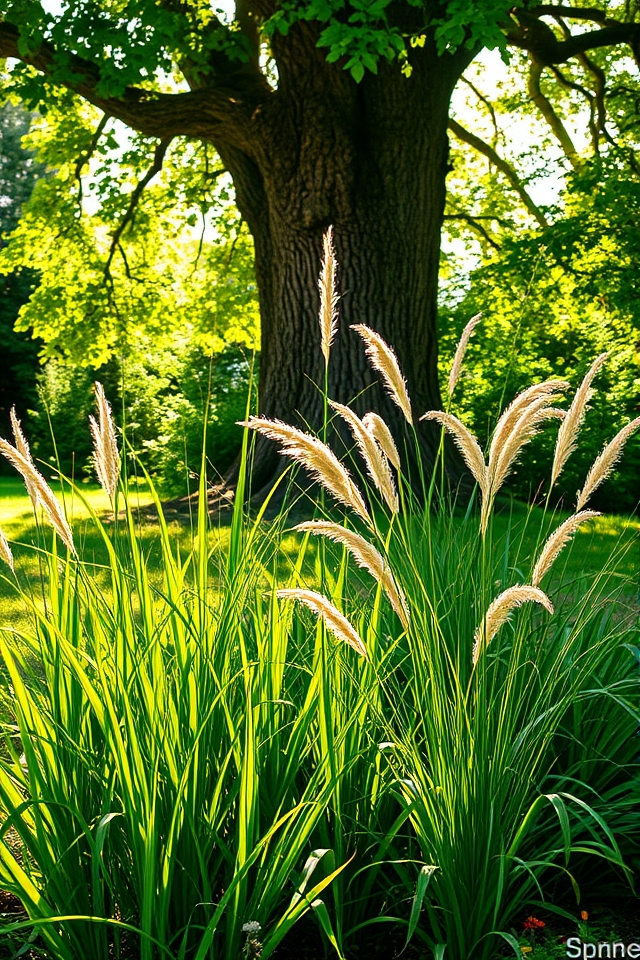
Ornamental grasses are a fantastic addition to areas around trees, enhancing the landscape with their unique textures and colors. These hardy plants come in various heights and forms, providing a beautiful contrast to the bark and foliage of trees. Their graceful movement in the wind and seasonal changes in color can create visual interest year-round. Additionally, they require minimal maintenance, making them a perfect companion for trees, enhancing both beauty and ecological balance in your garden.
Foster a Pollinator-Friendly Space

Creating a pollinator-friendly space around trees is crucial for supporting local ecosystems. Planting a variety of native flowers, herbs, and shrubs that bloom at different times can attract bees, butterflies, and other beneficial insects. Consider including plants like milkweed, coneflowers, and lavender to provide food sources. Additionally, avoid using pesticides to guarantee a safe habitat for pollinators. This not only boosts biodiversity but also enhances the beauty and health of your landscape.
Set Up a Cozy Seating Area

Creating a cozy seating area around trees can transform your outdoor space into a serene retreat. Choose comfortable chairs or a stylish bench that complements the natural surroundings. Add soft cushions and blankets for warmth and comfort. Incorporate small side tables for drinks or books, and consider stringing fairy lights or hanging lanterns in the branches for ambiance. This inviting setup not only enhances your garden’s beauty but also encourages relaxation and connection with nature.
Implement Drip Irrigation for Convenience
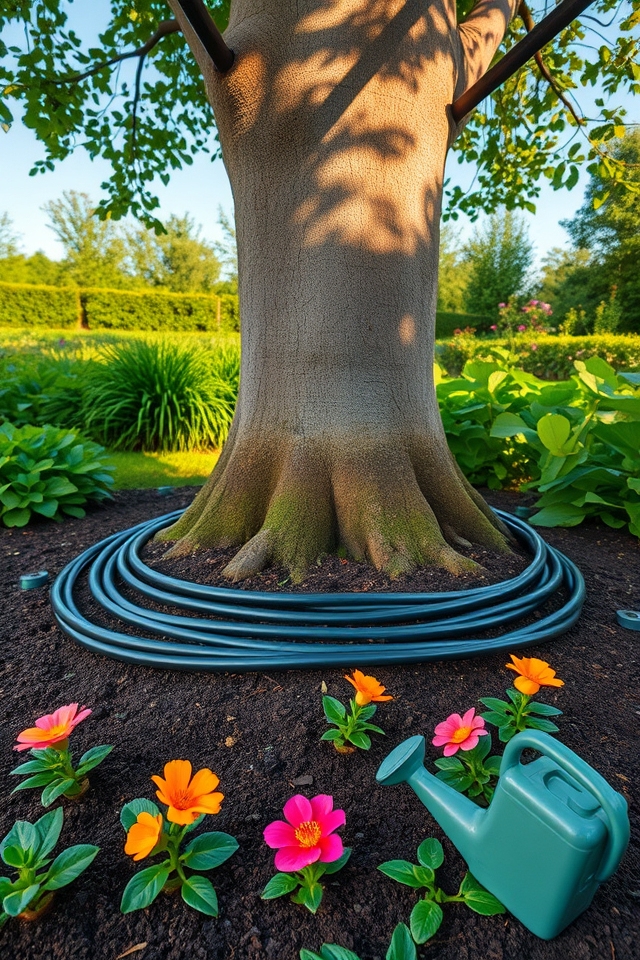
Implementing drip irrigation is an efficient way to guarantee your trees receive consistent moisture without excessive water waste. This method delivers water directly to the root zone, promoting deep root growth and reducing evaporation losses. By setting up a drip system around your trees, you can easily regulate the amount of water each tree receives, making it a convenient solution for maintaining healthy and thriving plants, particularly during dry periods.
Choose Variegated Foliage for Contrast

Choosing variegated foliage can create stunning visual contrast in your garden, especially around trees. The unique patterns and colors of variegated leaves—featuring combinations of green, white, yellow, or even pink—draw the eye and enhance the surrounding landscape. These plants can highlight the lush canopy above while providing a vibrant ground layer. Incorporating them strategically around your trees not only adds depth but also guarantees year-round interest, as the foliage changes with the seasons.
Experiment With Vertical Gardening
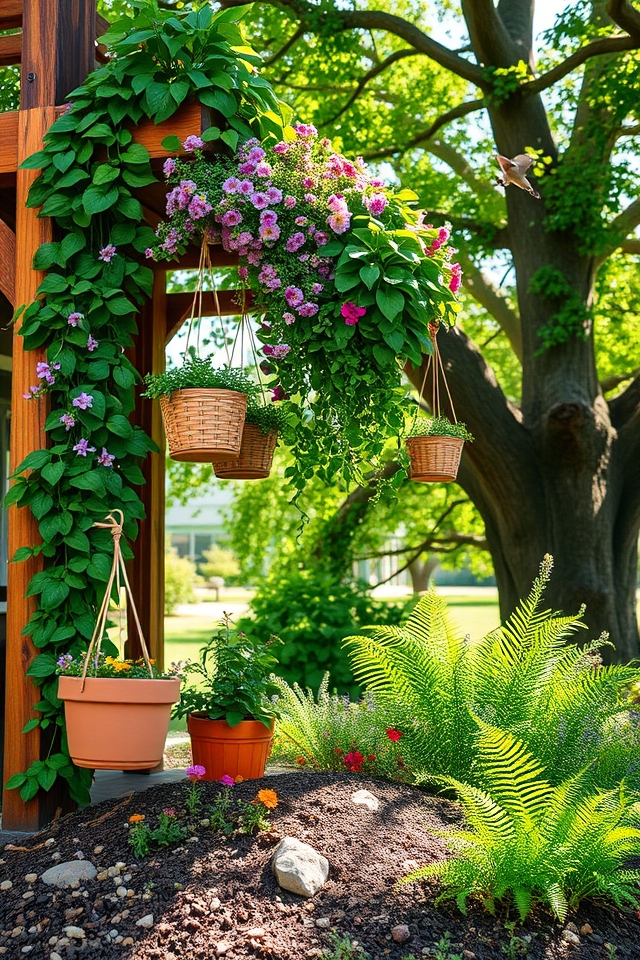
Vertical gardening is an innovative way to maximize space around trees while adding visual interest. By using structures like trellises, wall planters, or hanging pots, you can cultivate a variety of plants that thrive in vertical settings. This method enhances air circulation and sunlight access, promoting healthier growth. Additionally, vertical gardens can help shade tree roots, retain moisture, and create a vibrant, layered landscape that draws the eye and encourages biodiversity.
Plant Low-Maintenance Succulents
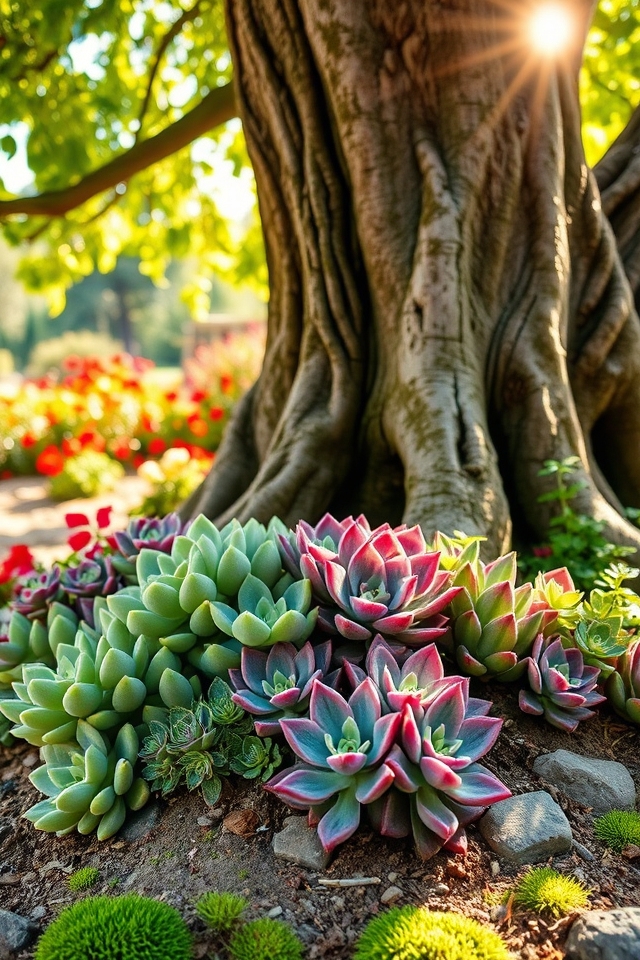
Planting low-maintenance succulents around trees is a clever way to enhance your landscape while minimizing upkeep. These hardy plants thrive in well-drained soil and require minimal watering, making them ideal companions for tree roots that can compete for moisture. Varieties like sedums, echeverias, and haworthias not only bring vibrant colors and interesting textures to the area but also help prevent soil erosion. Their resilience guarantees a beautiful, low-water garden that flourishes with little effort.
Integrate Decorative Mulch for Aesthetics

Integrating decorative mulch around trees not only enhances the visual appeal of your landscape but also offers practical benefits. Mulch can help retain moisture, suppress weeds, and regulate soil temperature. Choose from a variety of materials such as wood chips, stone, or colored rubber mulch to complement your garden’s aesthetic. Creating a clean, well-defined border with mulch can elevate the overall design while providing essential nutrients to the tree’s root system.
Establish a Fern Collection
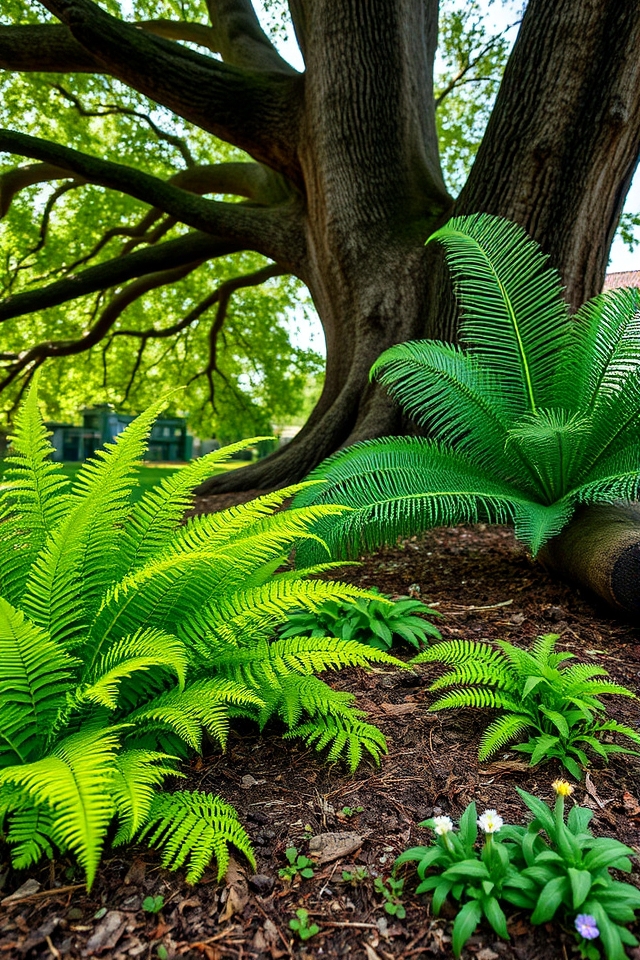
Establishing a fern collection can transform your garden into a lush, green oasis. Ferns thrive in shaded areas, making them perfect companions for trees, where they flourish in dappled sunlight and humid conditions. Consider varieties like the elegant Maidenhair, robust Boston fern, or the striking Ostrich fern, each offering unique textures and colors. Grouping different species can create visual interest, while their feathery foliage adds a soft touch to the landscape beneath your trees.
Create a Sensory Garden With Fragrant Plants

Creating a sensory garden around trees using fragrant plants can transform your outdoor space into a delightful haven. Consider planting lavender, rosemary, and jasmine to fill the air with their soothing scents. Incorporate herbs and flowers that release aromatic fragrances when touched or brushed against, such as mint or marigolds. This inviting garden not only engages the sense of smell but also encourages exploration and relaxation, making it a perfect retreat for all ages.
